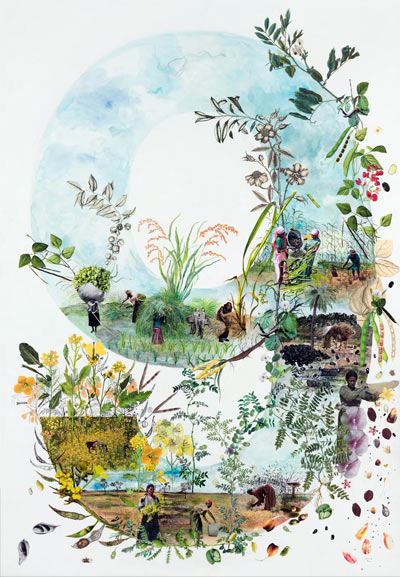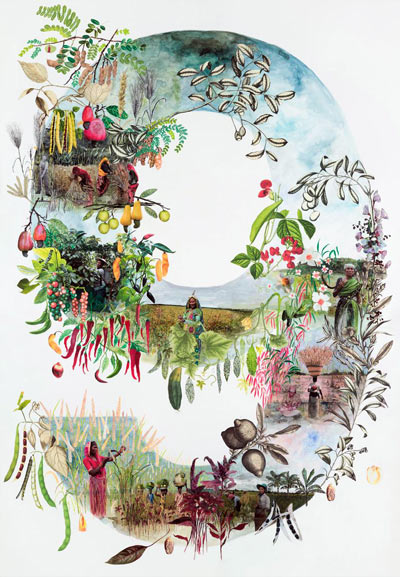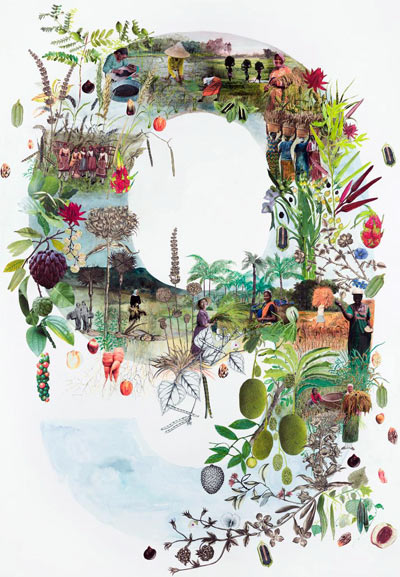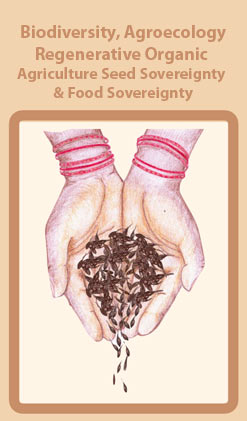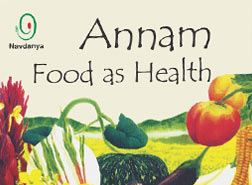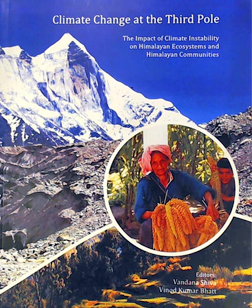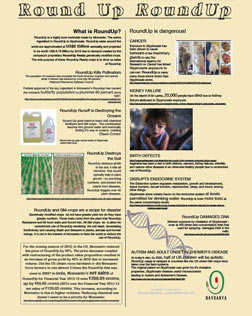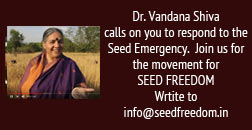From the series Paradoxes of Plenty, Navdanya (9 seeds) #40, #41, #42, 2021.
Drawing and collage, 123 x 93 cm, frame, pass partout, museum glass
In fact, women have always been the greatest experts on and guardians of biodiversity.
They have been the keepers of seeds, the producers of foods, and the healers. Biodiversity itself has been revered in female form.
Vandana Shiva
For the exhibition La vita nuova: l’amore in Dante nello sguardo di dieci artiste, Marzia Migliora created three works (drawing and collage) entitled Paradoxes of Plenty, Navdanya (9 seeds), whose central theme is the figure of the woman. However, this is not an ideal woman, as in Dante’s conception, someone who because of the love that she instills in the hearts of men brings them closer to the supreme Love of God.
No, in this case the harbinger of change and moral and spiritual growth is the woman who works in the fields, who takes care of the production of food and the sustenance of her loved ones.
Her source of inspiration and enlightenment is the attention and care she gives to life in all its different forms.
The artist, through the graphic representation of the number nine, which recurs as a symbolic constant in Vita nuova and in each of the three works, wanted to pay homage to the vitality and force for change promoted by Navdanya (9 seeds), an organization dedicated to the protection of biodiversity and small-scale agriculture that has established, among other things, an incredible seed bank, founded by activist Vandana Shiva in Dehradun (India) in 1987.
Navdanya promotes systems of sustainable agriculture and fights for the improvement of the condition of women in India, educating farmers and inviting them to use traditional methods of agriculture.
The name Navdanya comes from a ritual, common among South Indian families, that involves planting 9 seeds during Navaratri, a celebration dedicated to all the female expressions of God.
After 9 days, the women bring the pots with the planted seeds to the river where they compare results and identify the seeds that performed best. Exchanges are then arranged, so that all the families in the village can plant the best seeds available. It is a symbolic ritual, but its value is very tangible. The cooperation between women leads to a better harvest, beneficial for all: their families, their men and the members of their communities.
Hence women become bearers of change and new forms of awareness (consider the different approach, respectful of the needs of the land, in sharp contrast with industrial agriculture which is devoted solely to yield and profit), as well as carriers of improved living conditions.
© 2016 Navdanya. All rights reserved. Design Inn Info Solution

